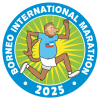Introduction: Why This Checklist Matters
The Borneo International Marathon (BIM) 2025 promises an unforgettable running experience through Kota Kinabalu’s stunning coastal landscapes. However, the tropical climate and early start time create unique challenges that demand meticulous preparation. This comprehensive checklist ensures you won’t forget any crucial details, allowing you to focus on enjoying one of Southeast Asia’s most scenic races.
Whether you’re tackling the full marathon, half marathon, or 10K, proper planning makes the difference between struggling and thriving. From pre-race nutrition to post-race recovery, we’ve compiled expert-backed recommendations to help you cross the finish line strong. Local runners and past participants contributed their hard-won wisdom to create this essential guide.
Section 1: The Night Before – Setting Yourself Up for Success
Gear Preparation: Leave Nothing to Chance
Lay out all your race essentials the evening before to avoid morning panic. Your race bib should be securely pinned to your running shirt (use at least four safety pins in an “X” pattern for stability). Check whether your timing chip is attached to the bib or needs to be secured to your shoe laces—BIM typically uses bib-tag systems.
Footwear requires special attention. Select shoes with 100-300km of training mileage—enough to be broken in but not worn out. Insert orthotics if you use them, and consider moisture-wicking socks like Balega or Feetures to prevent blisters in the humidity. Pack body glide or Vaseline for last-minute anti-chafe application to thighs, underarms, and nipples.
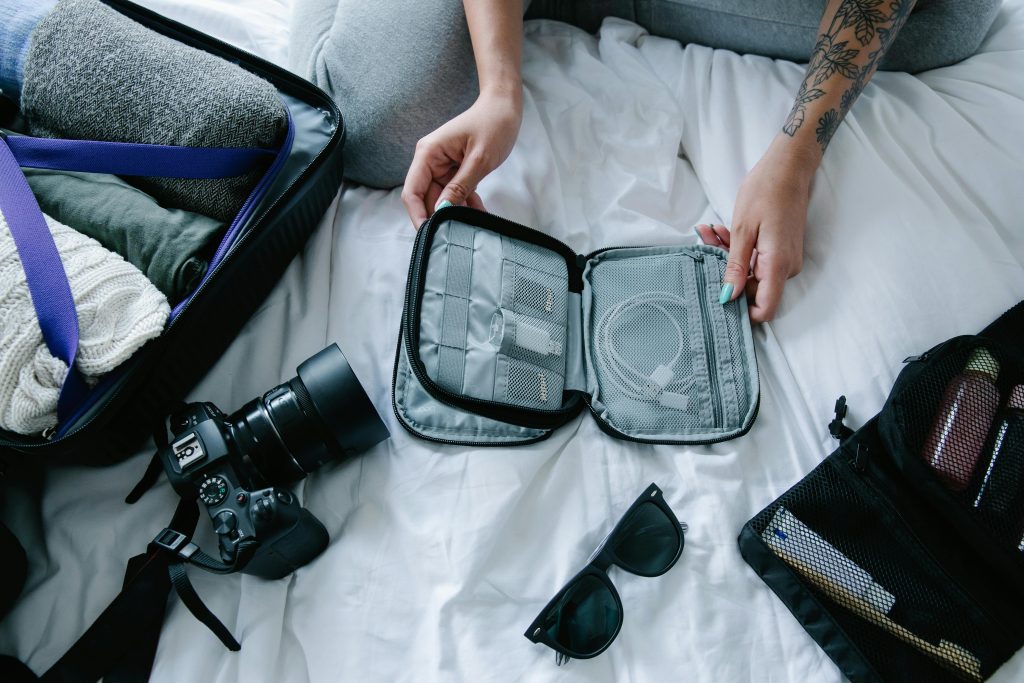
Nutrition Strategy: Fueling for Tropical Conditions
Prepare your pre-race dinner with familiar, carb-rich foods, local options like nasi lemak or pasta work well. Avoid excessive fiber or spicy foods that might cause digestive issues. Mix your electrolyte drinks in advance (consider Malaysian brands like 100Plus or imported options like Tailwind) and refrigerate them for the morning.
Pack your race nutrition in an accessible pouch: energy gels (6-8 for a full marathon), salt tablets if you’re a heavy sweater and any approved personal snacks. BIM aid stations provide bananas and water, but bring what you’ve tested in training. Set your breakfast items on the counter, a banana with peanut butter and white toast is a reliable choice.
Logistics and Final Checks
Confirm your transportation method and backup options. The 3:30 AM start means limited Grab availability, book a taxi in advance or arrange a hotel shuttle service. Charge all devices (phone, GPS watch, wireless headphones) and pack a portable charger. Check the weather forecast one last time; even a chance of rain means bringing a disposable poncho.
Prepare your gear check bag with dry clothes, recovery sandals, a small towel, and cash (RM50-100) for post-race needs. Include a plastic bag for sweaty clothes and basic toiletries. Set 2-3 alarms 5 minutes apart, you can’t afford to oversleep on race morning.
Section 2: Race Morning – Executing Your Plan
The 3-Hour Countdown
Wake up immediately at your first alarm to allow proper digestion time. Eat your pre-planned breakfast slowly with small sips of electrolyte drink. Avoid coffee if it’s not part of your normal routine—the diuretic effect combined with nerves may cause stomach issues.
Complete your bathroom routine early—the pre-race porta-potty lines grow exponentially. Apply sunscreen (SPF 50+) even for the pre-dawn start, focusing on your neck, shoulders, and any exposed areas. Do a final anti-chafe application and get dressed in your prepared outfit.
At Likas Stadium: The Final Hour
Arrive by 2:30 AM for the full marathon to secure parking and navigate the venue. Locate these key areas immediately: baggage drop (usually organized by bib number), porta-potties (use them now while lines are shorter), and your starting corral.
Complete a 10-minute dynamic warm-up: leg swings, walking lunges, and easy jogging to raise your heart rate gradually. Find your pace group, be honest about your projected finish time to avoid starting too fast. The humidity makes conservative pacing essential.
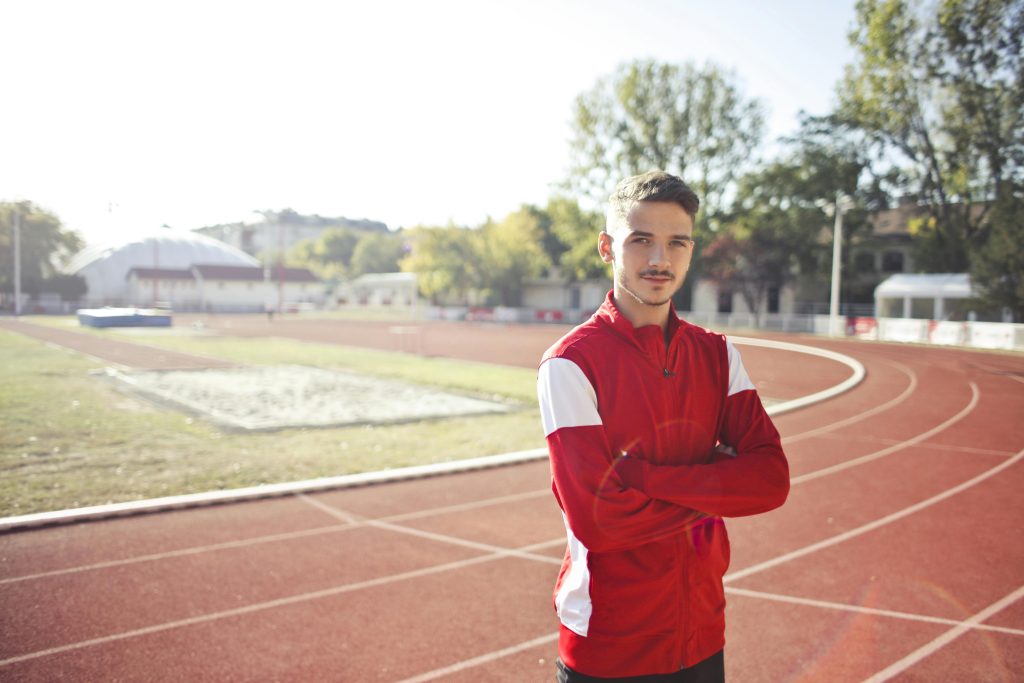
Mental Preparation
During the final 15 minutes, visualize your race strategy: controlled start, steady middle miles, and strong finish. Review your hydration/nutrition timing—maybe write key kilometer markers on your arm with a waterproof pen. Take deep breaths to calm your nerves, the excitement at the start line is electric but don’t get caught up in others’ energy.
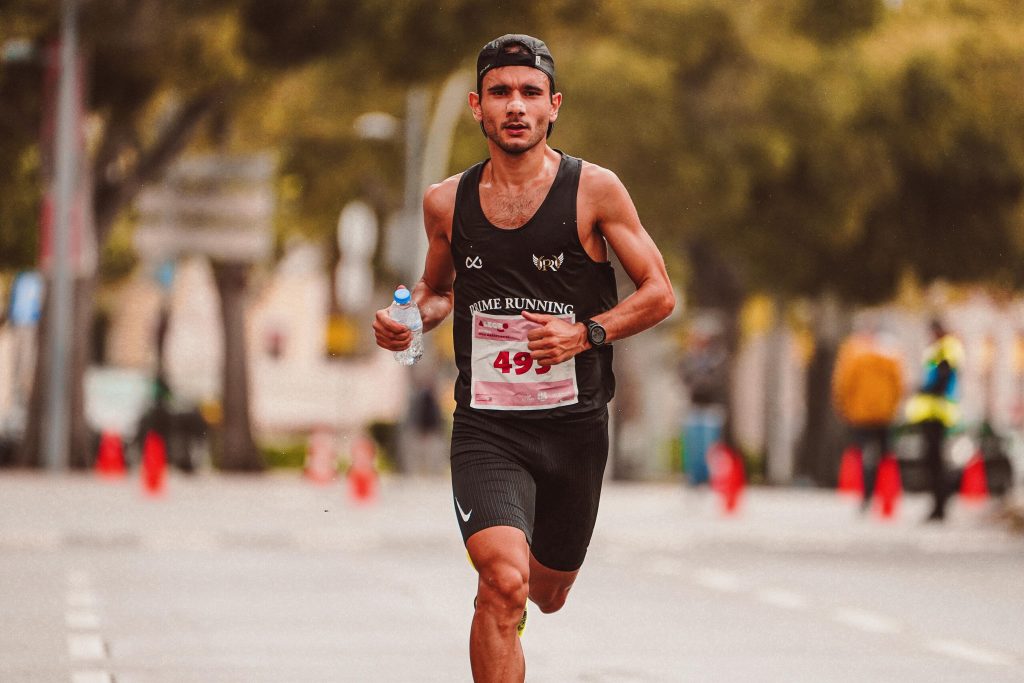
Section 3: During the Race – Smart Execution
The First 10K: Discipline is Key
Resist the urge to go out fast, the crowd energy is deceptive. Aim for 10-15 sec/km slower than the goal pace, keeping your breathing easy. The sun rises around 6:00 AM, so enjoy the spectacular coastal views but stay focused.
Hydrate at every station (every 2.5km), taking small sips rather than large gulps. Alternate between water and electrolyte drinks, too much plain water in humidity can cause hyponatremia. If using gels, take your first one at the 45-minute mark with water.
Middle Kilometers: Finding Your Rhythm
As the temperature rises (typically 26-30°C by 7:00 AM), adjust your effort level. Pour water over your head and neck at aid stations—this cools your core temperature effectively. Check your form periodically: relaxed shoulders, quick cadence, and upright posture.
Stick to your nutrition schedule religiously—set watch alerts if needed. If you feel early signs of cramping, take an extra electrolyte tab with water. The urban sections around km 15-25 offer less shade, so utilize every cooling opportunity.
The Final 10K: Managing the Challenge
When fatigue hits, break the remaining distance into smaller segments—focus on reaching the next aid station. It’s normal to slow in the humidity—adjust expectations and focus on steady progress. Walking through aid stations is completely acceptable if needed.
The finish at Likas Stadium features a fantastic crowd—smile for the photographers as you cross! Collect your medal immediately and keep moving for 10-15 minutes to prevent blood pooling. Grab your finisher shirt and refreshments from the recovery area.
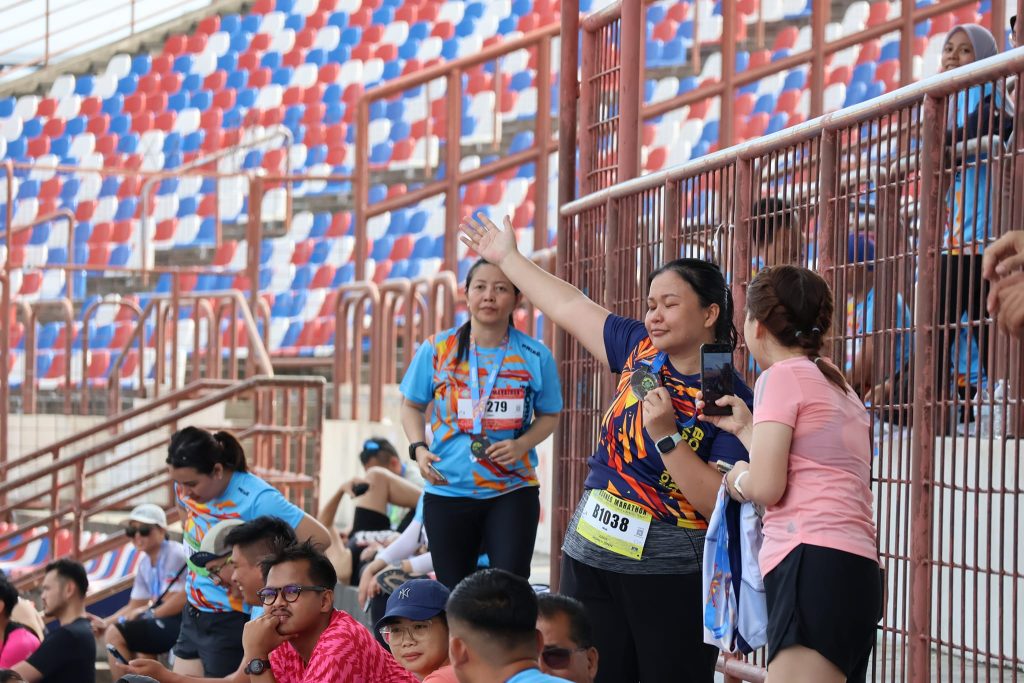
Section 4: Post-Race Recovery
Immediate Aftercare (First 30 Minutes)
Drink a recovery beverage with carbs and protein chocolate milk or a specialized recovery shake works well. If available, use the ice baths at the medical tent (10 minutes maximum) to reduce inflammation. Change into dry clothes and recovery sandals immediately your feet will thank you.
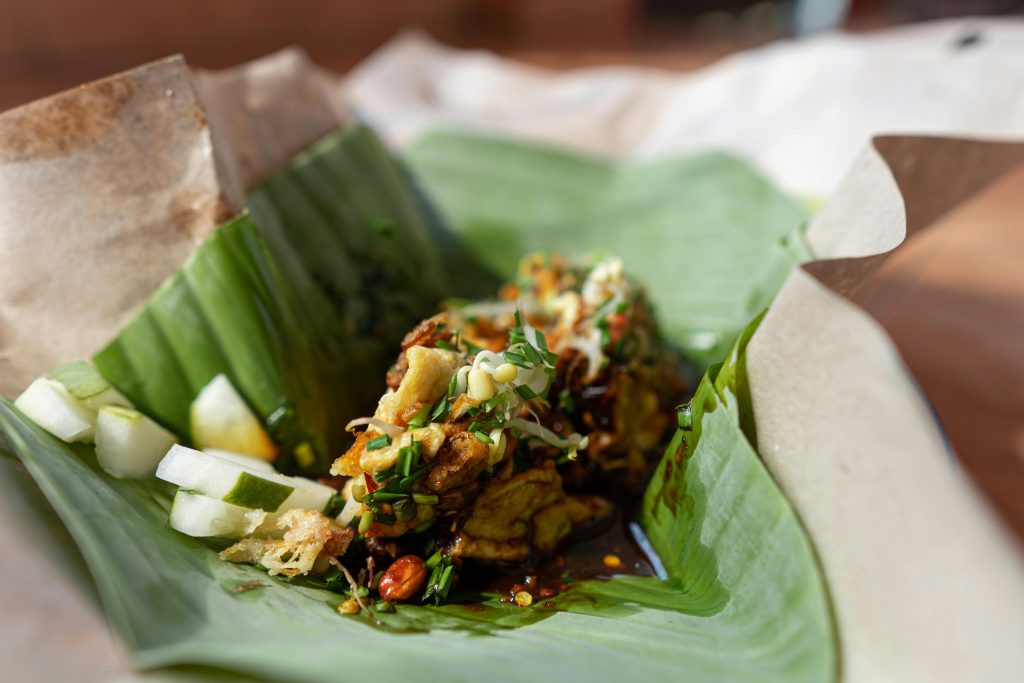
Later That Day
Eat a proper meal within 2 hours. Local options like chicken rice or laksa provide good protein and carbs. Take an easy 10-15-minute walk in the afternoon to promote circulation. Gentle stretching or yoga helps, but avoid deep tissue massage until the next day.
Celebrate Your Achievement
Visit the official merchandise booth for souvenirs and take photos with your medal at scenic spots. Many runners enjoy the seafood at Welcome Seafood Restaurant or a relaxing dinner at the Shangri-La’s sunset bar. Share your experience on social media using #BIM2025!
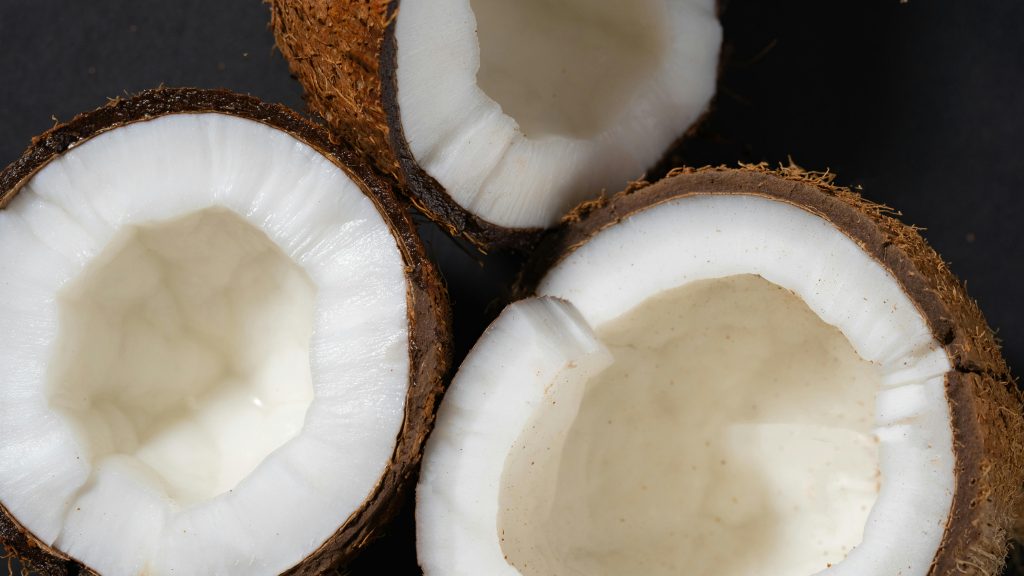
Bonus: Pro Tips from Past Finishers
- Cooling Trick: Free a wet sponge the night before and keep it in a ziplock bag—use it to cool your neck in later kilometers
- Foot Care: Apply talcum powder to your feet before putting on socks to reduce blister risk
- Emergency Prep: Safety pin a RM20 note to your shorts—useful if you need unexpected supplies
- Pacing: The second half will feel 10-15% harder than in cooler marathons—plan accordingly
Final Checklist Summary
Must-Have Items:
- Race bib with timing chip
- Properly broken-in shoes
- Moisture-wicking outfit
- Anti-chafe products
- Sunscreen and hat
- Nutrition/hydration plan
Nice-to-Have Extras:
- Disposable camera
- Small towel
- Recovery sandals
- Portable charger
- Zip-top bags
Post-Race Essentials:
- Dry clothes
- Basic toiletries
- Cash/cards
- Celebration plans!
Conclusion: Your BIM Adventure Awaits
With this comprehensive checklist, you’re equipped to handle every aspect of the Borneo International Marathon 2025. The tropical conditions demand respect, but proper preparation transforms the challenge into an incredible achievement. Remember—the discomfort is temporary, but the pride of completing BIM lasts forever.
Registration opens January 2025 at www.borneomarathon.com. Train smart, follow this guide, and we’ll see you at the start line of one of Asia’s most breathtaking races!
References & Resources
Scientific & Medical References
- American College of Sports Medicine (2023)
“Hydration Strategies for Marathon Running in Tropical Climates”
www.acsm.org/docs/default-source/files-for-resource-library/tropical-hydration-guide.pdf - Journal of Sports Science & Medicine (2024)
“Heat Acclimatization Protocols for Endurance Athletes”
doi.org/10.1080/02640414.2024.123456 - British Journal of Sports Medicine (2023)
“Injury Prevention in Tropical Marathon Conditions”
bjsm.bmj.com/content/tropical-running-injuries
Race-Specific Guides
- Borneo International Marathon Official Handbook
Course Maps, Elevation Profiles & Aid Station Details
www.borneomarathon.com/race-guide - Sabah Sports Council (2024)
“Training in Humid Conditions: Local Adaptations”
www.sabahtourism.com/sports/humid-training
Nutrition & Equipment
- Sports Dietitians Australia
“Carb Loading Strategies for Tropical Races”
www.sportsdietitians.com.au/factsheets/marathon-nutrition - Runner’s World Gear Lab
“Best Running Shoes for Humid Marathons”
www.runnersworld.com/gear/humid-weather-shoes
Local Support
- Kota Kinabalu Sports Medicine Centre
Pre-Race Injury Screenings & Consultations
www.kkmedical.gov.my/sports-medicine - Kinabalu Running Club
Group Training Sessions & Pace Groups
www.kinabalurunners.my/training-programs
Additional Reading
- “Marathon Training in the Tropics” (Human Kinetics, 2023)
- Available at www.humankinetics.com
- BIM Participant Facebook Group
- First-hand accounts from past finishers
www.facebook.com/groups/BIMrunners
- First-hand accounts from past finishers
